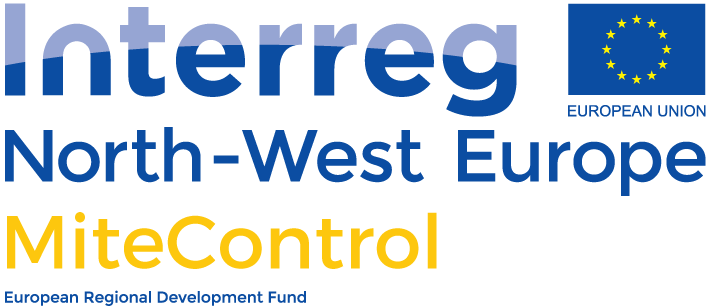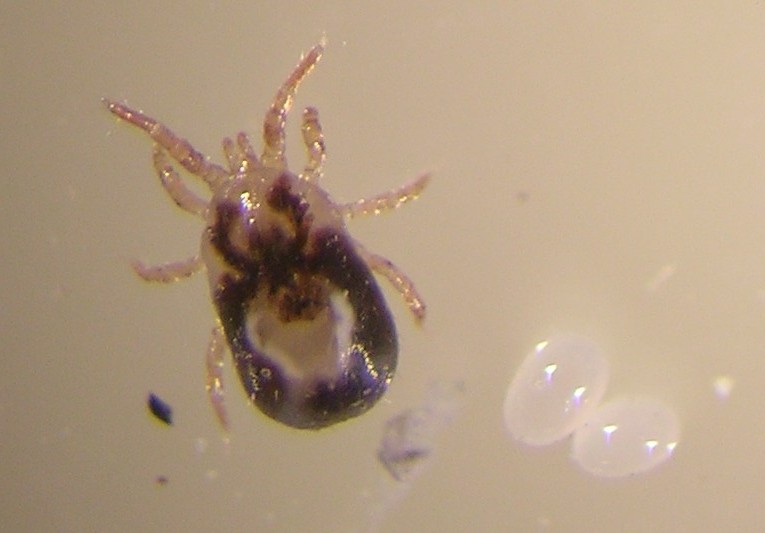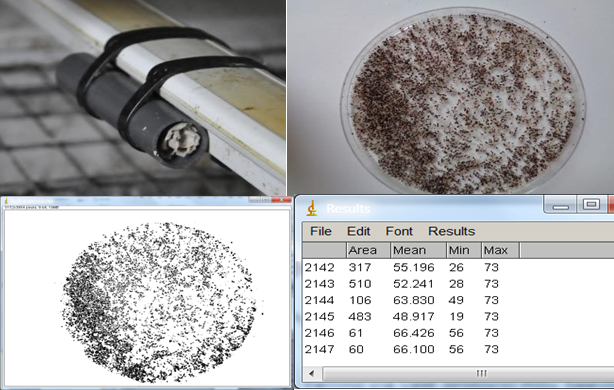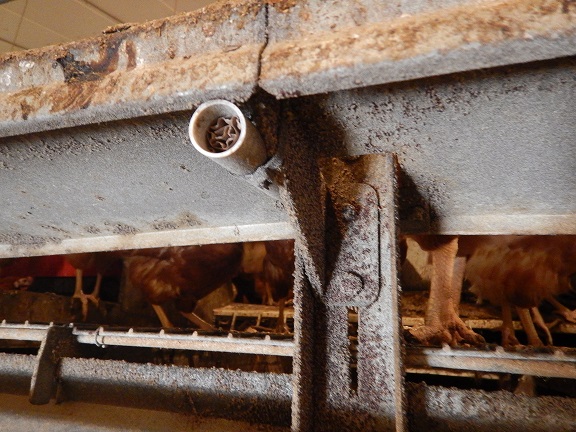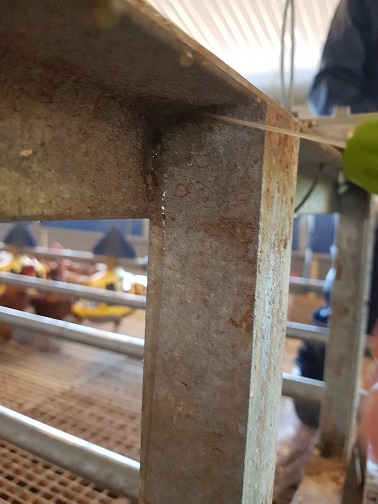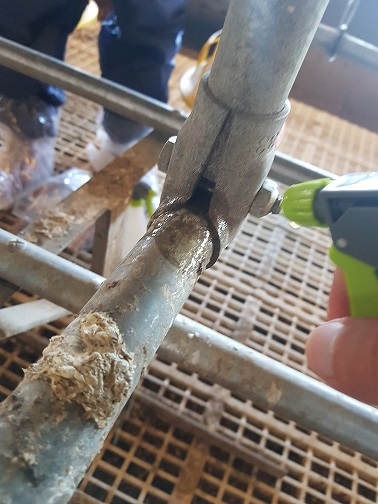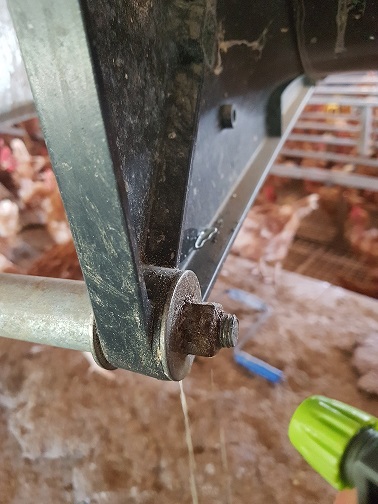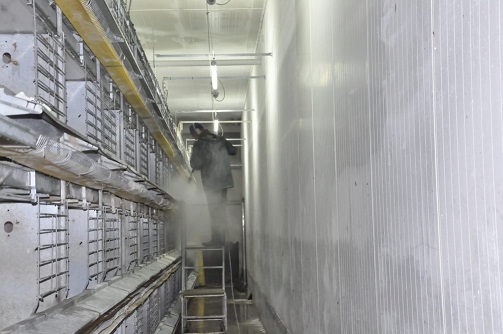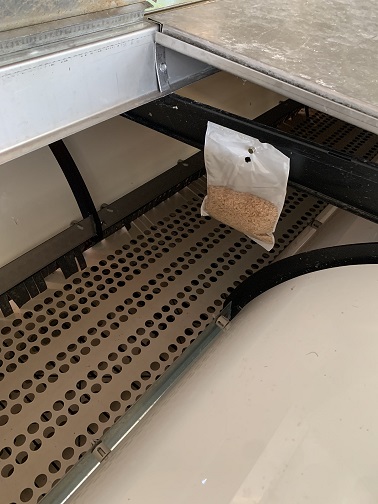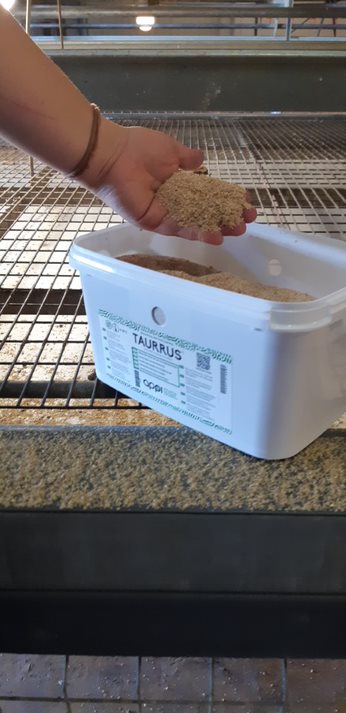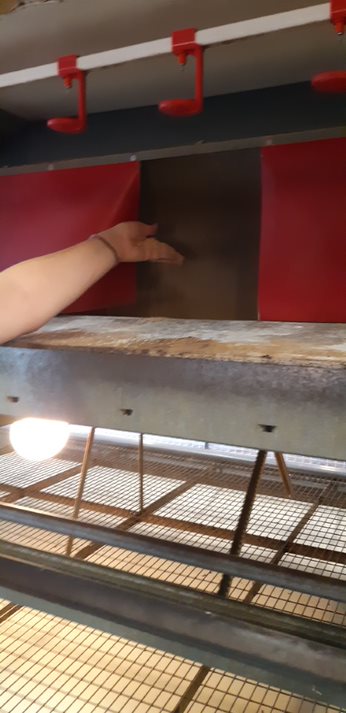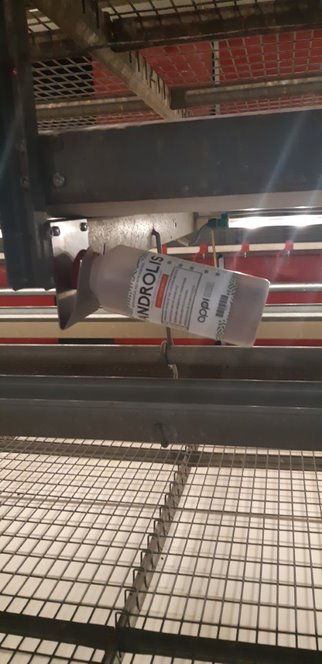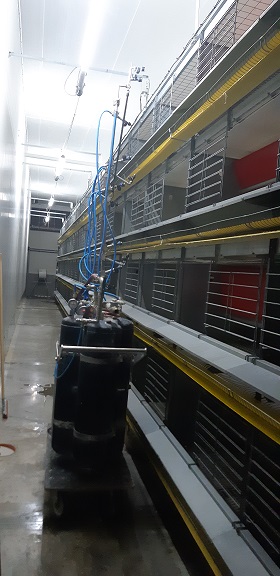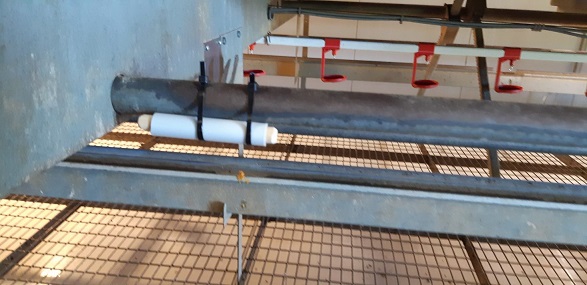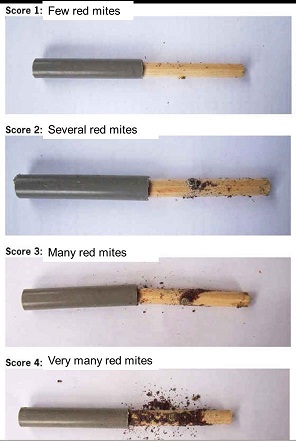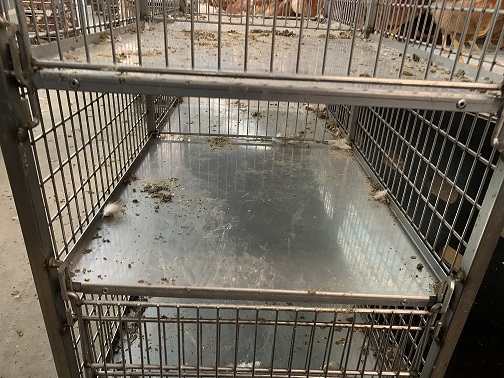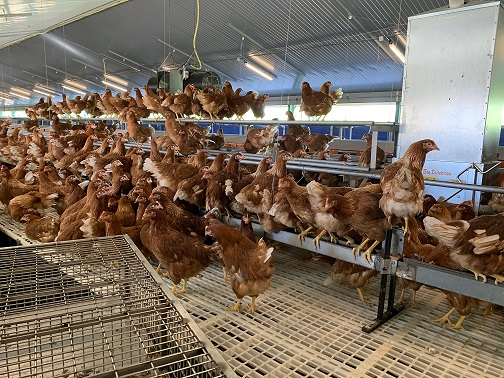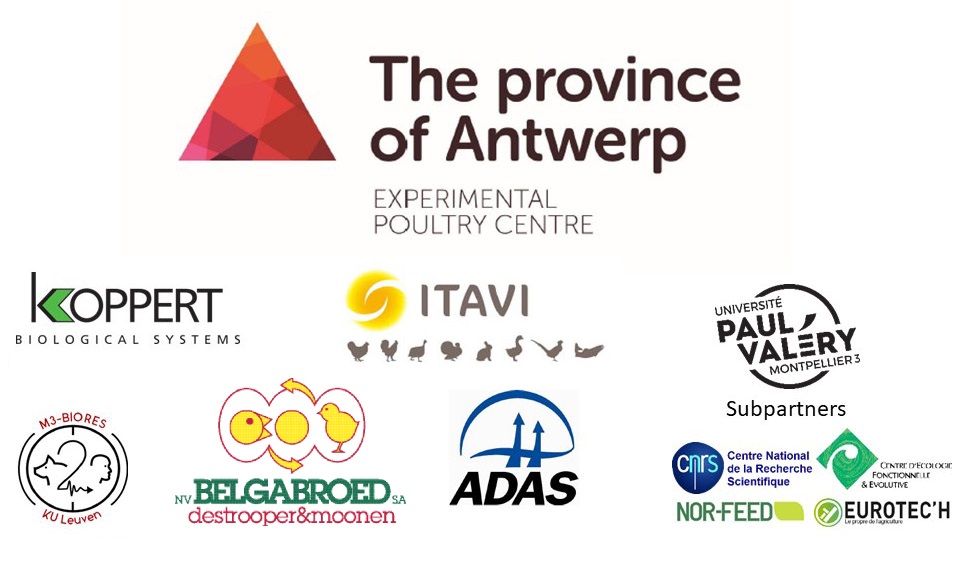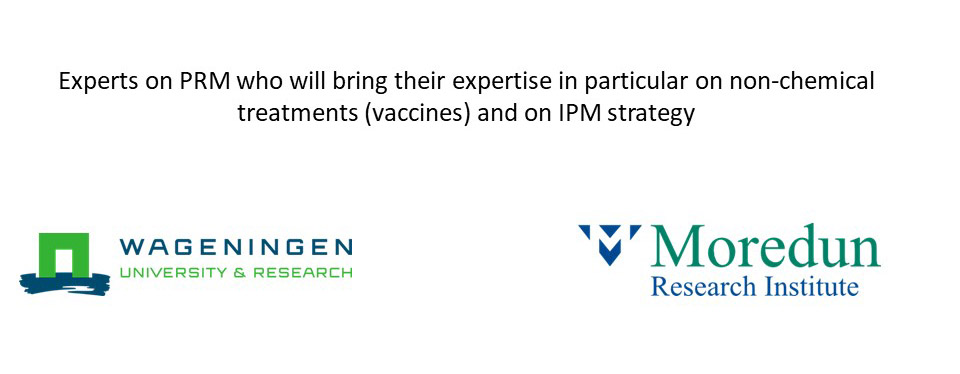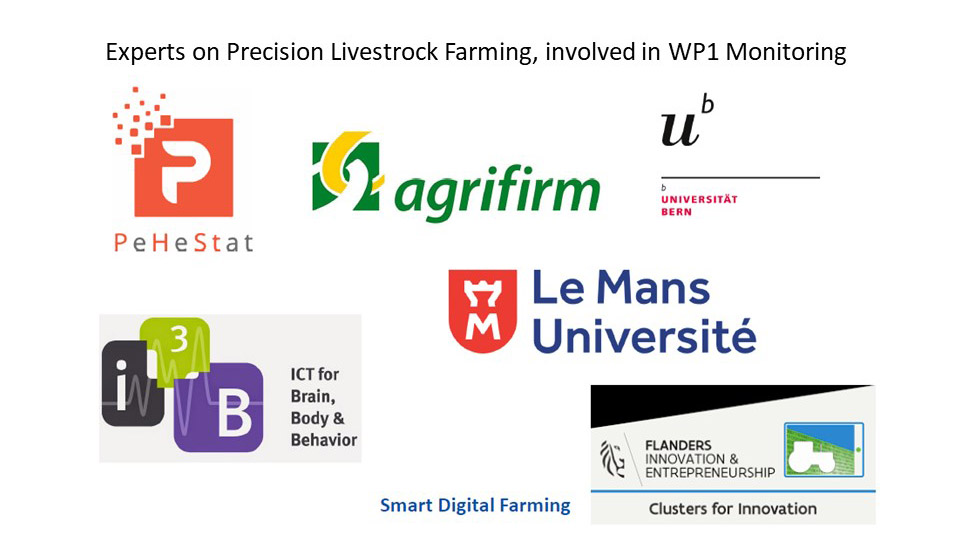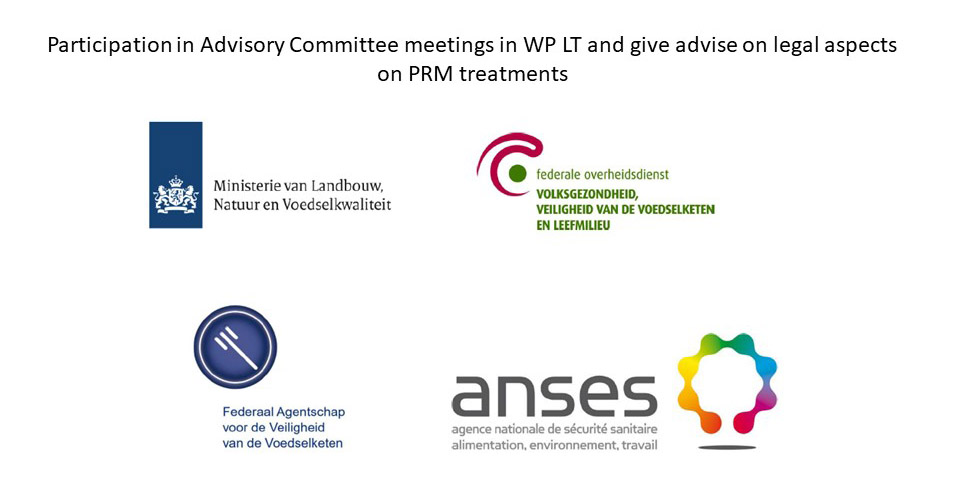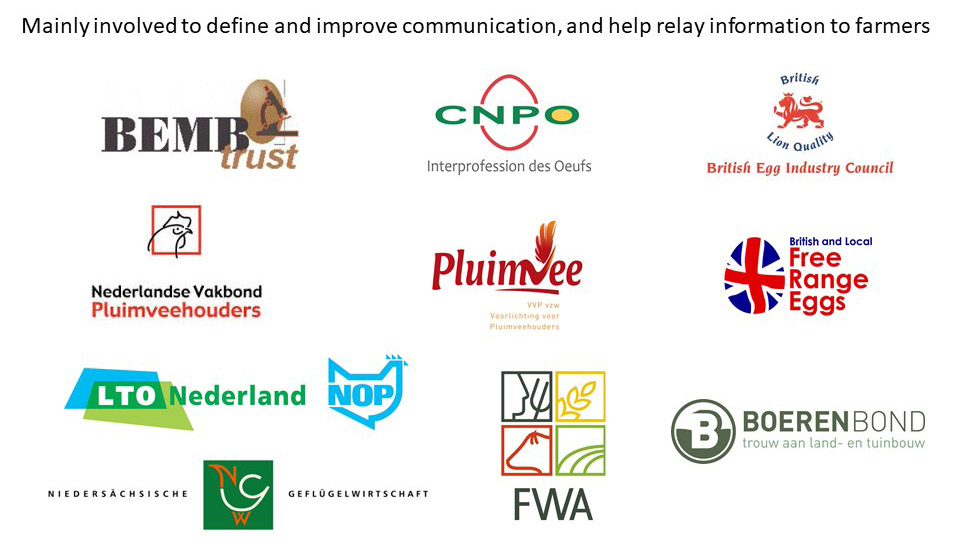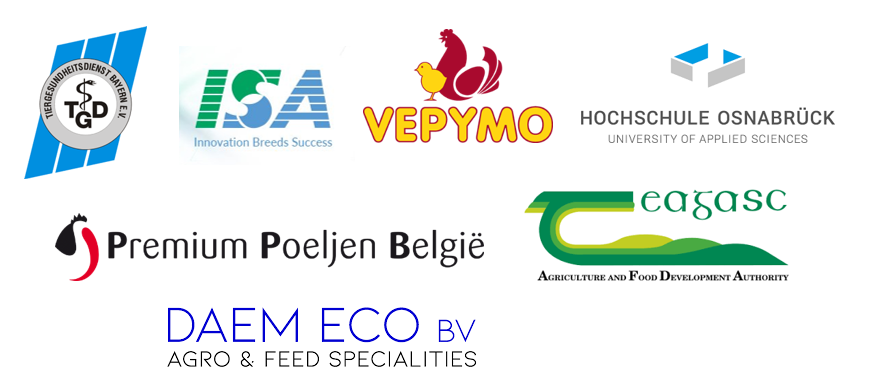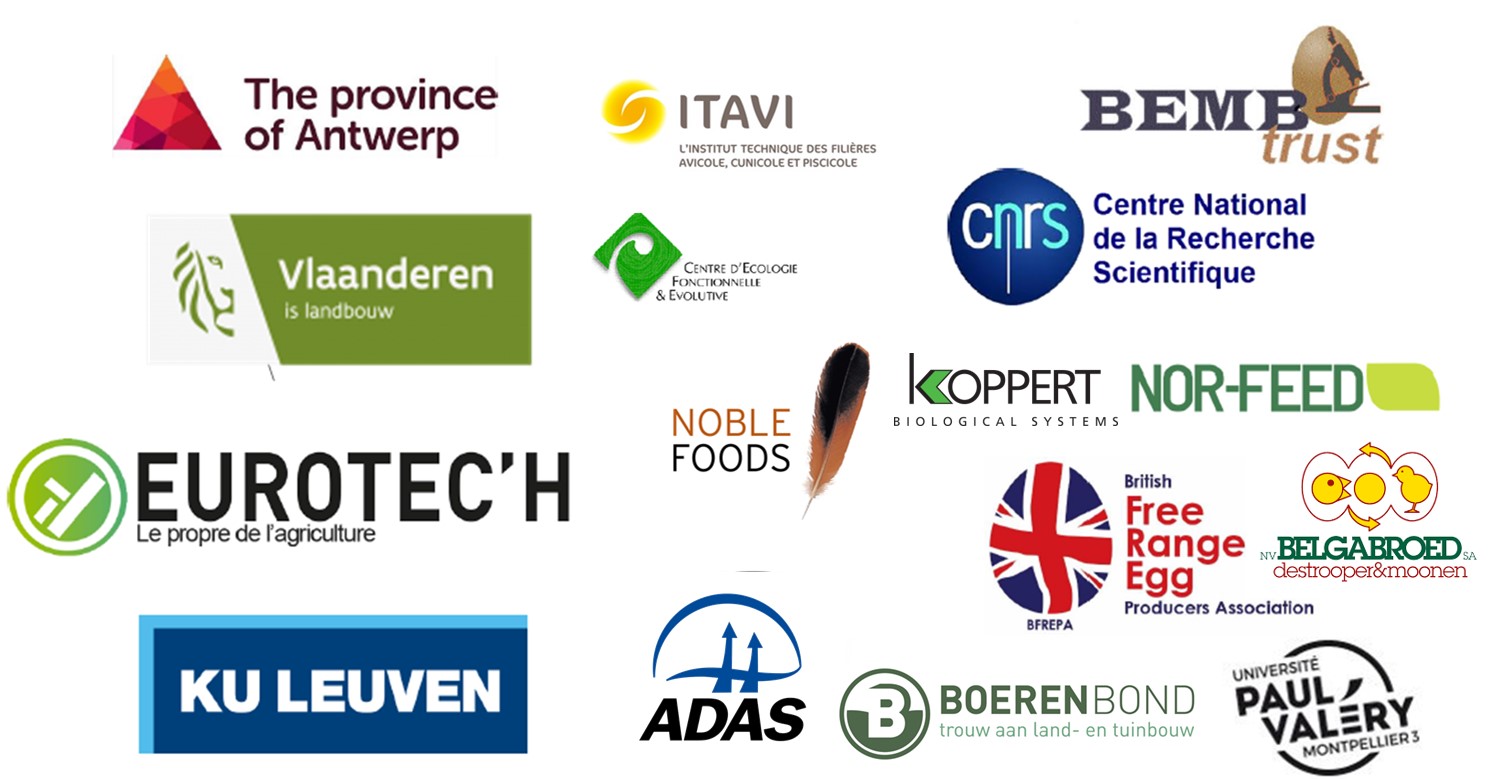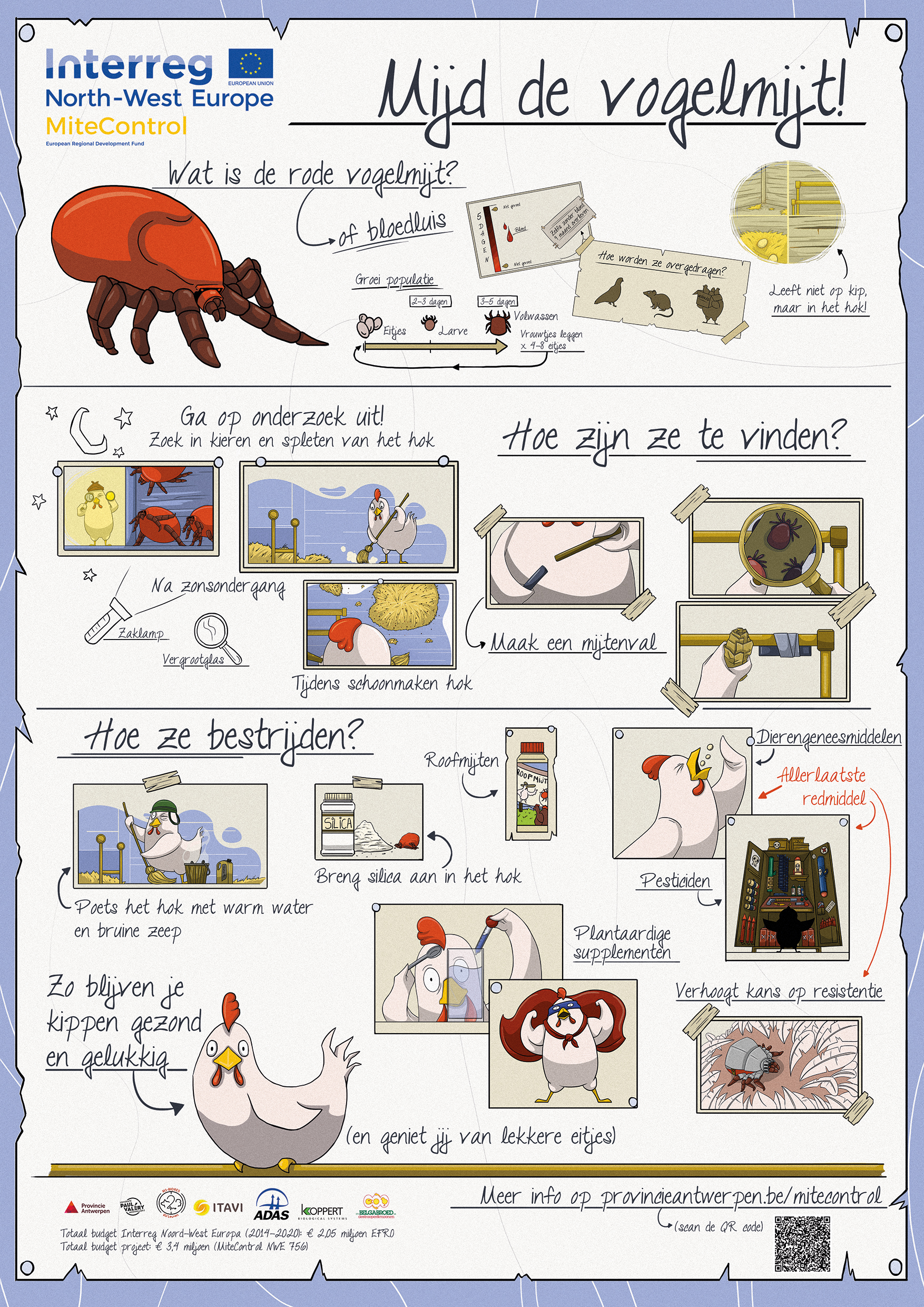Work package 1 : Developing an automated monitoring and decision support system
Routine monitoring of any pest species is key to guiding pest control decisions and monitoring the efficacy of these measures.
Visually monitoring red mite however is challenging as the mites hide in cracks and crevices. Often if the mites can be seen, their numbers are already too high and it may be too late to treat them effectively. As a result, it is necessary to use specific monitoing methods that can give more information than the human eye.
Current monitoring methods commonly used are passive traps (not attractive) that are displayed in the hen house. After their blood meal, mites use the traps as a hiding spot. The number of traps has to be sufficient and controlled frequently (collecting, scoring and replacing) in order to have a proper idea of the mite population's dynamic. But this can be time consuming and challenging for farmers to fit around other husbandry tasks.
The aim of this work package is to develop an animal based automated monitoring system to replace these traps. Mite infestations can make the hens become restless and agitated during the night. This altered behaviour can be measured by sensors (cameras) at night which will indicate the degree of mite infestation in the hen house depending on the state of agitation.
In order to develop this monitoring tool, the workplan will be to :
(1) detect specific hen behaviours related to PRM infestations with cameras
(2) scale up the device to work in commercial farms (implement this camera technique at night)
(3) develop an early warning system including a user interface to assist the farmer in their decision making regarding PRM management
(4) discuss the possibilities of the technique on farm level and sector level.
PRM effect on hen's behaviour
The goal is to develop an algorithm that puts in relation level of PRM infestation with hen's nightime activity. For that purpose, the following actions are undertaken :
- Video recording of small group of hens with different types of sensors
- (2D and 3D cameras) to detect certain behaviors based on infrared and depth data.
- Mite monitoring in the environnment of the small groups of hens to compare hen's activity during night and PRM populations
- Literature review of different behaviors in layer hens. After data analysis, behaviours that can be detected by an algorithm will be made.
Work package 2 : Improvement of non-chemical treatment uses
One of the major challenges of IPM is to manage pests by minimizing the use of synthetic insecticides/acaricides. Traditionally farmers have relied on chemical methods to control red mites. The use of preventive measures and non-chemical treatment approaches offer an alternative which is more environmentally friendly. The objective of this WP is to gather scientific information in order to optimize the use of ‘non-chemical’ treatments, individually or in combination, and in such a way as to maintain efficiency over the long term. Emphasis is placed on commercially available ‘non-chemical’ treatments: predatory mites, vaccine, plant-based feed additives (including repellent substances), electrified perches (there is a small electrical current running through the barriers with which the hens cannot come into contact, but is lethal for red mite on their journey towards the hens).
Expected results:
- scientific bases to help optimize the integrated use of recently developed PRM control methods (links with WPT3)
- scientific bases for anticipating and managing resistance, in order to guarantee sustainable control by new methods (links with WP Long term effects)
Three groups of tasks
- Looking for the most voracious predatory mites from farms
- Organizing fights between mites in miniature arenas to compare between predator populations the average number of PRMs they can kill. We confront predators taken from farms to have the maximum chance that they are well adapted to the farming conditions.
- Genotyping mite predators to distinguish the different predator species and state identify the most promising ones (mites are very difficult to distinguish even under the microscope; some species require biotechnological tools to be distinguished).
- Testing compatibility between ‘non-chemical’ control means. PRM does not live on the hen and is an integral part of the poultry house ecosystem. Many ecological factors can affect the effectiveness of control, including positive or negative interactions between predatory mites and other treatments.
- Estimating the toxicity of plant-derived products on predatory mites by in vitro tests
- Assessing the synergistic or antagonistic effect of treatment combinations using an experimental system mimicking a portion of a henhouse
- Assessing the risk of emergence of resistance to plant-derived products. While resistance to pesticides has been widely studied in insects and mites, the study of resistance to repellents* is still in its infancy. We are embarking on the adventure to optimize the use of plant repellents against PRM in the long term.
- Measuring sensitivity to plant-derived compounds using olfactometric tests to see how it varies between populations
- Determining whether less sensitive populations can be obtained by growing them in the presence of plant-derived compounds to see if less sensitive phenotypes are inherited.
*Any anti-pest product can more or less quickly encounter resistance phenomena. The populations of pests are composed of individuals more or less sensitive to treatment. Under the effect of treatment, less sensitive pests reproduce more than others. As a result, treatment becomes less effective as is well known with bacteria and antibiotics.
Work Package 3 : Developing and trialing Integrated Pest Management (IPM) strategies
![]()
The aim of WP3 is to develop efficient Integrated Pest Management (IPM) strategies against the poultry red mite and to encourage their application on layer farms.
Integrated Pest Management is a way of controlling pest species in agriculture to reduce economic losses, and this in a sustainable way. It is a holistic approach where different steps are combined to prevent and control pest infestation and to reduce the use of chemical pesticides. These steps include:
prevention of pest introduction (e.g. by hygiene and biosecurity measures)
monitoring of the pest population
start treatment after a certain threshold of the pest population (based on the monitoring)
focussing on non-chemical treatments (e.g. plant-derived products or natural enemies)
only using chemical treatments as a last resort, when the non-chemical treatments appear to be insufficient to control the pest
avoiding resistance emergence against certain treatments
a good evaluation of the IPM strategy.
With this approach, the total amount of chemical pesticides used is highly reduced and therefore the impact on the environment as well.
In WP3, IPM strategies will be composed based on a literature study of what is currently available for different IPM steps, surveys executed on farms to map the current and desired future according to the farmers, and the results of WP1 (monitoring) and WP2 (non-chemical treatment combinations). Three IPM strategies will be selected that are applicable for farmers, 2 for conventional farms and 1 for organic farms. These approaches will be tested in commercial conditions on 12 pilot farms: 4 in Belgium, 4 in France and 4 in the UK, with a focus on different housing systems.
In the end, an economic evaluation of the IPM approaches will be done based on the efficacy, costs, work load, and pesticide reduction.
IPM approaches
Monitoring
Two monitoring tools will be used during IPM trials :
- Ricksticks (PVC tube + woodstick ) : a fast method, not very precise (scoring from 1 to 4) that will be used frequently in order to act quickly if necessary
- Kartonnetjes (PVC tube + corrugated cardboard ) : labour intensive and precise method (count of actual number of mites) which will be used less frequently but will give more information on mite infestation
Pre IPM flock
It is advised to start the empty period with as low as possible PRM infestation. Therefore in case of moderate to high infestation levels, it is advised to clean parts of the house where there are clusters of PRM with water and brown soap.
Empty period
During the empty period, the henhouse should be cleaned thoroughly. This means dry cleaning the facilities at first, followed by a thorough wet cleaning with hot water and soap and finally a disinfection. Studies illustrated that using soap eradicates a lot more mites than using water alone. Be caredul that the cleaning products don't interfere with preventive treatments (for example, do not use silica or insecticide if you plan to use predatotrs). For the cleaning of the house, the following steps should be followed :
- Remove manure
- Remove all clustered manure residues (scraping)
- Dry clean house
- Clean with compressor
- Clean heat exchanger
- Dry clean hen house second time
- Clean ventilation duct
- Clean aeration tubes
- Clean manure belts
- Clean central manure belts
- Clean egg belts with high water pressure
- Remove all dirt from the house
- Clean whole house with steam cleaner
- Let everything dry
- Clean manure container/pit
- Disinfect after drying
Pullet delivery
Mites can easily be introduced to the farm through the delivery of pullets. At time of delivery of the pullets, crates need to be checked for presence of mites and pullet rearer should be contactec to check if he had issues with PRM.
Management actions during lay
To help prevent the introduction and growth of the mite population, management actions should be carried during the laying period. These measures include :
- Biosecurity : Implement appropriate hygiene measures for staff and external visitors, use disposable or clean egg trays and specific measures for multi-houses farms.
- Flock management actions : remove frequently hard crusts of manure, dust, egg debris on egg belt and manure from manure belt and scapers. Temperature should also be kept below 19°C
- Environment : Have an appropriate pest-control, pets kept away from the vicinity of the henhouses and vegetation cover kept low close to the hen house
Preventive treatments
In Mitecontrol project, 3 combinations of preventive treatments will be tested :
- Predatory mites + vaccine
- Predatory mite + water tank additive
- Silica + water tank additive
Each strategy has specific protocols to put in place.
IPM actions in response to rising mite populations
In response to PRM monitoring data from the traps, actions will be undertaken. The actions increase in intensity, as the numbers of the mites increase and the ‘thresholds’ are passed, in an effort to control mite population growth :
The initial project focuses on the control of PRM in BE, FR and UK on layer farms, with extra communication in NL. The capitalisation initiative aims to reach new sectors: breeding reproductive hens (which supply 1day old chicks for broilers and pullets) in BE (2,1 million birds at 122 farms) and NL (5,8 million at 230 farms) and rearing (future laying hens that are reared from 1 day to 4 months of age) in FR (19 million at 450 farms) and BE (3,8 million). PRM infestations are equally present in these farms. Controlling PRM infestations in rearing will reduce the transfer of PRM to layers. Housing types and legislations are different in the subsectors so optimisation/adaptation is possibly needed. The work on PRM genetics will be expanded to the new target groups which will improve the durability of the tested IPM programmes. By expanding our demonstration area, more farmers will be reached and will become aware of the advantages of using IPM, including cameras, to control PRM. Using the current partnership, the findings of the initial project can be disseminated over the new areas and the new insights gained by the capitalisation will be applied in the initial sectors. German and Irish AP will support knowledge exchange for these regions. The newly formed working group of poultry applied research institutes will enable the uptake of results during the project and after the project end. Expansion of the network with research centres from other NWE or EU regions will be encouraged. Also, a knowledge exchange platform will be started between the different sectors: rearing, layers and broiler breeders. This will increase the spillover effect from one subsector to another. UPVM3 participates in French research groups on biocontrol and its unintended effects, including resistance to repellents. This will ensure that information gathered will be added to the knowledge base on the subject. The project will use the results to improve the image of the poultry sector
Developing IPM strategies in a new sector: rearing farms
IPM strategies will be applied in 4 rearing farms in France and 2 in Belgium to reduce the risk of transmission of PRM to hen houses. Relevant housing types for this region will be selected.
Implementation of IPM in new sector: broiler breeder farms
Optimised IPM programmes will be implemented on 2 broiler breeder pilot farms in Belgium and the Netherlands given the different housing system compared to layers.
Communcation
Communication will be expanded to the new sectors (rearing and breeding farms) and new regions. Activities will include digital channels in case of a degraded sanitary situation.
